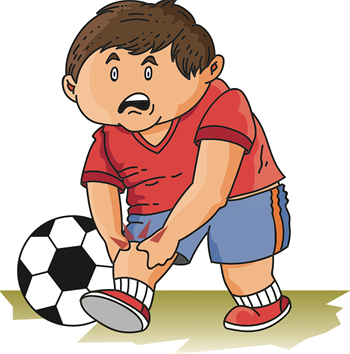
Whether you’re playing sports for fun or as a competitive athlete, don’t let sports-related injuries keep you on the sidelines this fall. The most common types of injuries are sprains, strains and stress fractures due to overuse. The following tips can help prevent injuries no matter what sport you play:
- Avoid overuse. Repetitive motions such as throwing a ball over and over again can lead to injury. If possible, mix up your routine with cross-training, which exercises different parts of the body to give the most-used areas some much-needed rest. Make sure to take “recovery days” to give muscles an opportunity to repair between training sessions.
- Develop a consistent stretching and warmup routine. An adequate stretching and warmup routine that mirrors the sport being played should be performed before every practice long enough to increase your heart rate slightly.
- Condition your muscles to increase stability. A strengthening program using light weights and high-intensity interval training can improve coordination and power. Try gentle resistance training with 30 minutes of aerobic activity.
- Focus on technique. For example, baseball players should be taught about throwing mechanics and follow the guidelines on how many throws to make in a day. By focusing on correct technique, you will not only avoid injury, but perform more efficiently and get greater gains from your sessions.
- Wear the right gear. Depending on what sport you are playing, always wear properly fitting footwear and protective equipment such as pads, helmets, mouthpieces, face guards, protective cups and eyewear. Parents of young athletes should talk with coaches to make sure they have the proper equipment before practices begin.
- Pay attention to warning signs. Listen to your body—it is important to keep track of symptoms such as unusual fatigue or pain that develops after practice or competition. These could be signs of existing or impending injury. Seek the advice of a medical provider if needed and remember that “no pain, no gain” does not apply here.